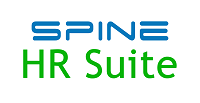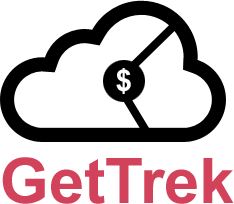Description

Remote

Spine Payroll
Comprehensive Overview: Remote vs Spine Payroll
Remote and Spine Payroll are both cloud-based payroll solutions, each tailored to different customer needs and market segments. Below is a comprehensive overview of each product, including their primary functions, target markets, market share, user base, and key differentiating factors.
Remote
a) Primary Functions and Target Markets
Primary Functions:
- Remote provides a comprehensive platform for managing international payroll, taxes, compliance, and benefits. It allows companies to hire full-time international employees or contractors legally and efficiently.
- The platform automates payroll processing, ensuring compliance with local labor laws and tax regulations across different countries.
- It includes features for HR management, employee self-service, and benefits administration.
Target Markets:
- Remote is tailored for companies looking to build or manage global teams, from startups to large enterprises.
- It is especially appealing to organizations that do not have a legal entity in every country they hire in, as Remote acts as the employer of record (EOR).
b) Market Share and User Base
- Remote is considered a significant player in the EOR and global payroll markets, particularly due to the rising trend of remote work and the globalization of the workforce.
- The user base includes both small and large companies that leverage Remote's capabilities to expand their hiring across multiple countries.
c) Key Differentiating Factors
- Global Reach and Compliance: Remote excels in offering a truly global payroll solution with compliance across various jurisdictions, which is beneficial for companies with diverse geographical needs.
- Employer of Record (EOR) Services: Remote provides complete EOR services, which is a primary differentiator for companies that do not have local entities abroad.
- Technology and User Experience: The platform focuses on user-friendly interfaces and seamless integration with other HR and financial systems.
Spine Payroll
a) Primary Functions and Target Markets
Primary Functions:
- Spine Payroll is designed primarily to streamline payroll processing, time and attendance tracking, leave management, and statutory compliance requirements.
- It focuses on providing detailed reporting and analytics to help organizations optimize their payroll and HR operations.
Target Markets:
- Spine Payroll targets primarily small to medium-sized enterprises (SMEs) and larger businesses within specific regions, often with a focus on the Indian market.
- The solution is used extensively by organizations within industries such as manufacturing, services, and retail that require robust domestic payroll capabilities.
b) Market Share and User Base
- Spine Payroll holds a competitive position within its target market, particularly among companies seeking specialized solutions for the Indian payroll system.
- Its user base mainly consists of regional businesses that need comprehensive payroll solutions that cater specifically to local compliance and statutory requirements.
c) Key Differentiating Factors
- Location-Specific Compliance: Spine Payroll is highly focused on meeting Indian statutory payroll compliance, which is crucial for businesses operating within India.
- Comprehensive Payroll Management: Offers robust features for payroll management including support for complex salary structures and compliance reporting.
- Customization and Scalability: Flexibility in customization to cater to the unique needs of diverse businesses within the Indian market.
Comparative Summary
While both Remote and Spine Payroll offer payroll management solutions, their market focus and feature sets are quite distinct. Remote is internationally oriented, ideal for businesses with global operations requiring compliance in multiple countries. Spine Payroll is more region-specific and caters primarily to the Indian market, focusing on local compliance and detailed payroll management. These differences indicate that the choice between the two largely depends on the specific regional needs and international ambitions of an organization.
Contact Info

Year founded :
1999
Not Available
Not Available
United Kingdom
Not Available

Year founded :
Not Available
Not Available
Not Available
Not Available
Not Available
Feature Similarity Breakdown: Remote, Spine Payroll
As of my last update, I don't have real-time access to specific proprietary details of commercial products released after October 2023, including exact features or user interface designs of Remote and Spine Payroll. However, I can provide a general framework for comparing payroll software products like these.
a) Core Features in Common
Most payroll solutions, including Remote and Spine Payroll, typically share some common core features:
-
Automated Payroll Processing: Both systems likely offer the ability to automatically calculate wages, benefits, and deductions, and to process payroll efficiently without manual intervention.
-
Tax Compliance: Payroll systems generally ensure compliance with local, state, and federal tax laws, handling deductions, and generating necessary reports.
-
Employee Self-Service Portals: Commonly, these platforms allow employees to access their pay stubs, tax documents (like W-2s/1099s), and manage personal information.
-
Direct Deposit: Support for transferring wages directly into an employee’s bank account is a staple feature.
-
Reporting and Analytics: Both platforms likely have robust reporting tools that help analyze workforce costs and payroll activity.
-
Integration Capabilities: Integration with other HR tech or accounting software (e.g., QuickBooks, NetSuite) is another common feature.
b) User Interfaces Comparison
While I can't provide specific details about the user interfaces of Remote and Spine Payroll, payroll platforms generally differ in:
- User Experience (UX) Design: The ease of navigation, intuitiveness, and overall look and feel. Both might offer modern, clean interfaces, but one might be more intuitive based on certain user feedback.
- Customization Options: Some may offer more customizable dashboards or reports.
- Mobile Accessibility: Both might offer web-based interfaces, but differences can exist in mobile-friendliness or the availability of mobile apps.
- Language and Localization Support: Depending on the target markets, one might offer broader language support.
c) Unique Features
Unique features can often set one payroll solution apart from another. Here are some possibilities:
-
Remote's Unique Features:
- Focus on Global Workforce Management: If Remote specializes in managing international teams, they might offer better features for handling multiple currencies, international compliance, and cross-border HR challenges.
- Global Benefits Management: Providing localized benefits according to employees’ countries.
-
Spine Payroll's Unique Features:
- Local Market Specialization: If Spine Payroll has a strong focus in a particular region, they might offer better compliance features and integrations tailored to local businesses.
- Deep HR Modules Integration: There might be specialized HR functions tightly integrated within the payroll system, offering extensive employee lifecycle management capabilities.
To make an accurate and detailed comparison, I would recommend looking at customer reviews, detailed comparison studies, and any available demos or marketing materials from both Remote and Spine Payroll. This information would provide deeper insights into the unique aspects of each product.
Features

Not Available

Not Available
Best Fit Use Cases: Remote, Spine Payroll
Remote and Spine Payroll serve distinct niches, each catering to specific business needs and scenarios. Here's a breakdown of their best fit use cases:
Remote
a) For what types of businesses or projects is Remote the best choice?
-
Global Teams & International Expansion:
- Remote-First Companies: Ideal for businesses that operate without a central physical office, allowing them to hire talent worldwide seamlessly.
- Multinational Enterprises: Companies looking to expand their workforce across different countries without establishing legal entities in each location benefit significantly from Remote's employer of record services.
- Startups Scaling Internationally: Startups aiming to tap into global talent pools without the administrative complexities of global payroll and compliance.
-
Compliance-Heavy Industries:
- Sectors that require stringent adherence to international labor laws, tax regulations, and compliance standards, such as technology, finance, and biotechnology.
-
Fast-Growing Companies:
- Firms experiencing rapid growth who want to focus on scaling operations rather than getting bogged down with international payroll and compliance issues.
-
Project-Based International Hiring:
- Companies that need to temporarily hire individuals in specific countries for particular projects.
Spine Payroll
b) In what scenarios would Spine Payroll be the preferred option?
-
Domestic Companies:
- Local Businesses: Small to mid-sized businesses operating within a single country where local payroll processing and compliance are prioritized.
- Industries with Local Regulations: Industries that require detailed attention to domestic payroll laws, taxation, and labor compliance, such as manufacturing, healthcare, and education.
-
Established Enterprises with Complex Payroll Needs:
- Companies with intricate payroll structures, such as multi-state operations or varied pay schedules, benefit from Spine Payroll's robust administration capabilities.
-
Businesses with Legacy Systems:
- Organizations looking to integrate new payroll systems with existing HR or financial software might prefer Spine if it offers comprehensive integration features compatible with their current technology stack.
Differentiation by Industry Verticals or Company Sizes
-
Remote:
- Tech & IT Companies: Often operate globally, requiring scalable solutions for international hiring.
- Creative Industries: Agencies and studios that employ talent from various parts of the world for diverse projects.
-
Spine Payroll:
- Manufacturing & Construction: Typically require localized payroll solutions due to the nature of the workforce.
- Public Sector & Educational Institutions: Often need detailed, localized payroll management and statutory compliance.
-
Company Sizes:
- Remote: Better suited for small to large companies looking to expand their international footprint efficiently.
- Spine Payroll: Suitable for small to medium-sized businesses focused on local operations, possibly with aspirations to scale internally first before going international.
Each product offers unique strengths, making them suitable for different business needs depending on the complexity and geographic scope of the company's payroll requirements.
Pricing

Pricing Not Available

Pricing Not Available
Metrics History
Metrics History
Comparing undefined across companies
Conclusion & Final Verdict: Remote vs Spine Payroll
To provide a conclusion and final verdict for Remote and Spine Payroll, let's evaluate the overall value, pros and cons of each product, and specific recommendations for users deciding between the two.
a) Best Overall Value
Remote offers the best overall value for companies that are operating globally or looking to expand internationally. It provides a comprehensive suite of HR services, including international payroll, compliance, and benefits management, making it an ideal choice for businesses with a global workforce. The platform simplifies complex international regulations, thus reducing the administrative burden associated with global operations.
Spine Payroll, on the other hand, is better suited for businesses operating within a single country, especially if that country is India, given its focus on local payroll processing and compliance. It offers robust features for payroll management and automating HR processes, delivering strong value for domestic businesses prioritizing cost-effective solutions.
b) Pros and Cons
Remote:
Pros:
- Comprehensive global payroll and compliance support.
- Simplifies complex international HR tasks.
- Facilitates easy international expansion.
- Integrated tools for hiring, onboarding, and benefits management.
Cons:
- May be considered expensive for small businesses or those with purely domestic operations.
- The platform could be overly complex for businesses without international employees.
Spine Payroll:
Pros:
- Cost-effective for domestic payroll management.
- Strong compliance features tailored for specific regions like India.
- User-friendly interface for managing payroll and HR functions.
- Focus on process automation and efficiency.
Cons:
- Limited global features and international compliance support.
- Less suitable for businesses planning rapid or extensive international expansion.
- May lack some advanced HR and benefits management integrations compared to global-oriented solutions.
c) Recommendations
For businesses trying to decide between Remote and Spine Payroll, consider the following recommendations:
-
Global vs. Local Operations: If your business operates on an international scale or plans to expand globally, Remote is the more suitable option. It addresses the complexities of managing a global workforce and ensures compliance across borders.
-
Cost Considerations: For smaller businesses or those operating mainly within a specific country, especially in India, Spine Payroll offers value for money with its cost-effective payroll and HR solutions.
-
Complexity and Scale: Consider the scale of your operations and your HR needs. Remote is a better choice for more complex, multinational HR operations, while Spine Payroll excels in simplifying domestic operations with streamlined processes.
-
Future Expansion Plans: Companies with clear plans to expand internationally would benefit from Remote’s infrastructure, whereas those intending to remain within domestic boundaries would find Spine Payroll sufficient and efficient.
In summary, the choice between Remote and Spine Payroll largely depends on the geographic scale and complexity of your business operations. By aligning your choice with your current and future operational needs, you can maximize the value and efficiency of your HR and payroll processes.
Add to compare
Add similar companies



